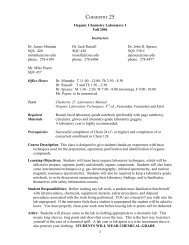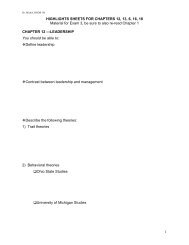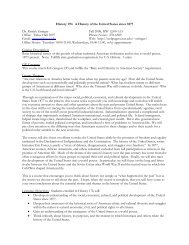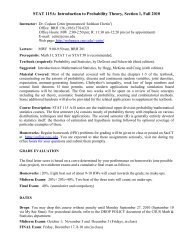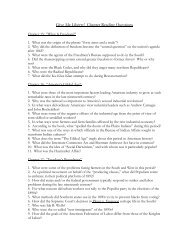final text
final text
final text
You also want an ePaper? Increase the reach of your titles
YUMPU automatically turns print PDFs into web optimized ePapers that Google loves.
15The starting material for our epoxide is citronellyl pivalate, a tri-substitutedalkene. Based upon the previously described mechanism, one would think thatthis compound would be a poor epoxidation substrate for Jacobsen’s catalyst,however Jacobsen has described this very approach to the reaction. 18 According tothisR1 R2R1OO R2Mncis alkene-epoxide transition stateMntrans alkene-epoxide transition stateFigure 12. Trans-Alkene approach produces steric repulsion 13-15paper, tri-substituted alkenes are indeed excellent substrates for a Jacobsenepoxidation and many such reactions have been carried out with high reactionrates and enantioselectivity. Figure 13 includes the six tri-substituted alkeneswhich showed promising yields and enantiomeric excesses. Also included inFigure 13 is the one unconjugated tri-substituted alkene that underwent Jacobsenepoxidation.In order to explain these seemingly contradictory results, Jacobsen had tore-evaluate his proposed mechanism for epoxidation. 18 This new theory involveda “side-on” skewed attack of the alkene upon the manganese-oxo complex thatinvolved the formation of two possible intermediates. With a cis-alkene, one lowenergy activated complex and one high energy activated complex are possible.With trans-alkenes, both possible activated complexes are high energy speciesbecause either approach of the alkene would produce the same steric repulsion.Therefore a trans-alkene would not proceed with appreciable yield and



